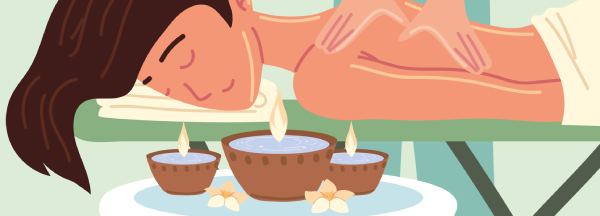Recently, stress has become an increasing concern in the fast-paced modern world. There is no doubt that stress negatively impacts both physical health and mental well-being. Therefore, considering overall wellness is a clear way to cope with stress. In the field of massage, recent developments aim to help users feel more comfortable and safer, with evidence supporting these improvements. It is valuable to understand which massage techniques are most effective for relieving stress and, in turn, making decisions that promote relaxation and overall wellness.
This research article will review various massage therapies primarily aimed at stress relief, highlighting their techniques, benefits, and suitability. Additionally, this article discusses regulatory considerations that will help readers navigate changes in the field of massage services with confidence.
Swedish Massage – Proven Techniques for Full-Body Relaxation
The most positive stress relief method overall is Swedish massage from massage therapy. The technique mainly involves smooth, long strokes combined with kneading and circular friction motions, which help improve circulation and relieve muscle tension. The goal of the treatment is to relax the entire body and address common physical stress issues, such as muscle tension or headaches. It is suitable for most people, even those new to massage therapy. During the session, the therapist creates a calming environment and applies pressure that is adjusted to be comfortable for each individual. Swedish massage is widely recognized as a safe and effective first choice for reducing daily stress, with many studies clinically showing it lowers cortisol levels and boosts mood.
Deep Tissue Massage – Targeting Chronic Tension
Furthermore, using pressure, deep tissue massage effectively targets the muscles and connective tissues and is not as light in touch as Swedish massage. It clearly demonstrates the similarity between two levels of stress-related muscle tension, primarily in the neck, shoulders, and back. In recent years, advancements in practitioner training and refinement of techniques have improved the safety and effectiveness of deep tissue massage. Challenging trained therapists involves applying pressure to help release muscle knots and adhesions while causing minimal discomfort. Regular sessions over time can improve flexibility, reduce pain, and lower stress hormones, making it an excellent option for those managing extended physical and emotional stress.
Aromatherapy Massage – Combining Touch with Essential Oils

Aromatherapy massage uses the power of essential oils combined with massage techniques to promote relaxation and reduce stress. Usually, oils like lavender, chamomile, and bergamot help you relax, and their calming effects are backed by science. This dual stimulation of senses—smell and touch—affects the nervous system and mood, making it a scientifically recognized therapy.
Using pure, calibrated essential oils in a standard way ensures safety and effectiveness. Often, oils are tailored to the client’s preferences and health needs, and aromatherapy blends are combined with Swedish or other similar massage styles, providing a complete escape from daily stress. This multisensory approach also helps clear the mind, reduce anxiety, and create a deep sense of well-being.
Hot Stone Massage – Heat Therapy for Muscle and Mind
Hot stone massage involves using heat and smooth stones, strategically placed on specific points in the body during a massage with traditional strokes. It is a warm massage; the heat penetrates deep into the muscle fibers, increasing blood flow, which promotes relaxation both physically and mentally.
Today, hot stone massage is popular because it offers dual benefits: relieving body tension and calming the nervous system through heat. This therapy is ideal for clients who find warmth relaxing and prefer gentler techniques. Therapists must, however, carefully control the temperature and follow proper hygiene practices to ensure client safety and comfort.
Shiatsu Massage – Balancing Energy through Pressure

The method called shiatsu is actually of Japanese origin, where fingers’ pressure is used to massage the energy meridians of the human body to restore the energizing and relaxing balance. This discipline attracts attention as a more holistic approach to stress relief that targets not only muscle tension but also affects the energy as a whole. It appeals to many because it goes beyond the conventional style of massage therapy. It improves sleep quality due to reduced anxiety and also lessens physical symptoms associated with stress, like headaches and muscle stiffness. Regarding the benefits of Shiatsu, almost everyone wants to experience it. Concerning safety and effectiveness, well-trained health practitioners combine ancient experience with modern anatomy.
Reflexology – Stress Relief through Foot and Hand Therapy
It targets pressure points on reflex areas-well-known ones include the feet, hands, or ears-that can be linked to different organs and systems in the body. Reflexologists apply pressure to these vital areas properly, enabling relaxation and stimulating the body’s natural healing system. It works well as a complementary medicine for stress relief because it is a non-invasive therapy. Many people report improved moods and reduced tension after a session. It is viewed very positively as an adaptive treatment for the client.
Considerations for Choosing a Massage Therapy
Selecting a foot-perfect massage technique involves recognizing personal stressors, health issues, and individual biases. It is highly valuable to visit experienced professionals in the field who follow hygienic and safety standards. Nowadays, many states regulate massage therapists as licensed professionals and have established training and qualification requirements to ensure client safety and guarantee quality care.
Additionally, consumers should inquire about terms and terminology related to therapists’ credentials, techniques, contraindications related to medical conditions, or any other relevant information. It is important for clients to communicate their preferred pressure levels and comfort during the session to achieve positive results. Furthermore, you should inform people about the benefits of combining massage therapy with other stress management practices such as mindfulness, physical activity, and good sleep.
Summary
With a few modern modifications for added safety and efficiency, Swedish massage, deep tissue massage, hot stone therapy, aromatherapy oil massage, shiatsu, and the reflexology method all address specific needs and techniques optimal for each individual. Although these methods are relaxed, they can become frustrating, influencing the person. Therefore, precision is essential. A person is the only one who can properly practice massage therapy under the guidance of professional practitioners and safety measures, and by doing so, they can maintain good health.

